As barefoot/minimalist shoe companies have continued to expand their markets beyond running and casual shoes, hikers have become the next target. The selection of hiking boot options has increased considerably over the past couple years. First there was Feelmax with the Kuuva, then there was VIVOBAREFOOT with the Aqueous (now replaced by the the Off-Road Hi and Synth Hiker), and this year we saw the introduction of the Merrell Proterra line, and the Lems Boulder boot.
One of the interesting things about the emergence of minimalist hiking boots is that so far, no two are alike (or even very similar for that matter). Each brand has a different take on what they think is important. For info on what I think is important, make sure you check out my series on Minimalist Footwear for Backpackers.
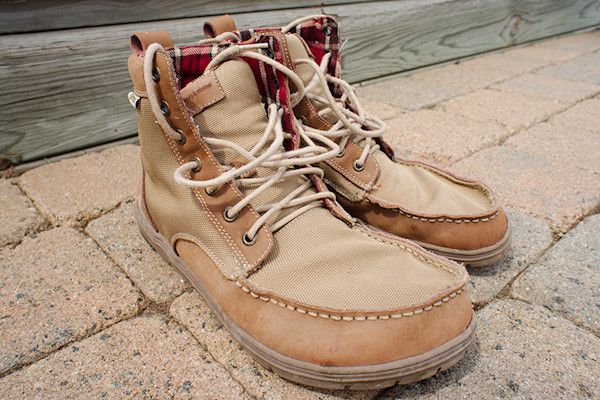
So, how do the Lems Boulder boots fit in all of this?
I do a lot of hiking and backpacking, so I can tell pretty quickly, just by looking at the way a shoe or boot is constructed, how well I think it will work for me on the trail.
The uppers of the Lems Boulder boot are constructed out of water-resistant leather, woven nylon mesh, and lined with a cotton fabric. The soles are made out of LemsRubber, an injection-moled/air-infused rubber that provides 9mm of traction, durability, and cushioning all-in-one. So, while these may not have a midsole, they definitely have some cush(ion) to them. The outsole has a mild tread pattern that looks to be well suited for hard-pack trail or perhaps rocky conditions, but not soft/wet/off-road use.
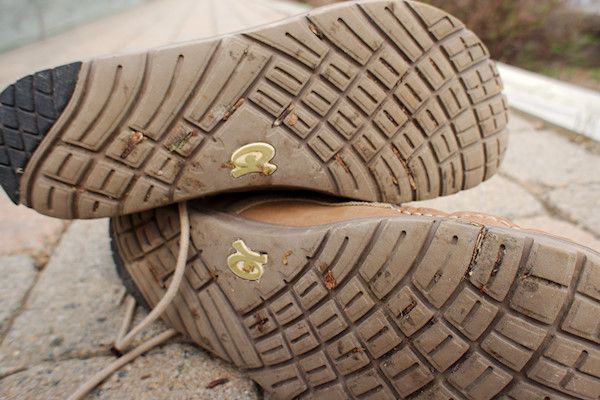
My initial assessment was that this boot would be best suited for:
-
Short hikes - Being leather and cotton-lined, they would be warm and retain moisture if soaked. Not a great combo for long hikes where you are working hard for hours (i.e. generating heat and sweating), or encoutering a lot of wet conditions (i.e. rain or stream crossings). On short hikes, this stuff doesn't matter too much.
-
Rocky conditions - Having a 9mm sole with some cushion to it, these boots provide a substantial amount of under-foot protection. Overkill for hard-packed trails, but nice for rocky/rugged conditions. Additionally, the use of leather around the toe means these would also have decent abrasion resistance (provided that the stitching holds-up).
-
Colder weather - The leather upper and the thicker sole means that the Boulder boot should provide warmth in cold conditions. These might be a great all-around shoe for spring, fall, and maybe winter.
-
Looking good around town - The boots look really nice, so they definitely achieve this right out of the box.
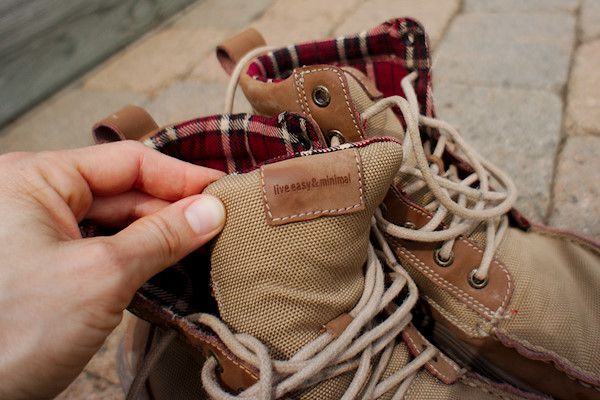
To the credit of Lems, these boots are not being billed as a full-on outdoors hiking boot, but as an around-town casual-use boot. They say the boots are "...great for stuffing into your pack during a hike and wearing around the campfire afterwords." So, based on my initial assessment, I would say that Lems and I pretty much agree on what these will work best for.
If I were to compare them to other minimalist hiking boots I have tried, I would say this: They have a wider toebox than VIVOBAREFOOT boots. They have a narrower mid-foot than the Feelmax Kuuva (for people with wide feet, the Kuuva wins). The Boulder boot has a thicker, more cushioned outsole than both the VIVOs and the Kuuva. The Boulder is more flexible than the VIVOs, but less flexible than the Kuuva. The Boulder boot has a more aggressive tread than the Kuuva, but a less aggressive tread than the VIVOs. The ankle of the Boulder boot is more flexible than that of the VIVOs, but not nearly as flexible as the Kuuva. Clear as mud?
Of course first impressions can only get you so far (that is to say, not far at all!), so I had to put these babies on my feet and see what they could do.
Out of the box, the Lems Boulder feels fabulous. It has this almost slipper-like feel to it that makes it very compelling. The combination of the nubby insole, the anatomic shape, flexible leather, the slight cusion to the outsole... Very nice. The toebox is generous, as we have come to expect from Lems (VIVOBAREFOOT could learn something from this!).
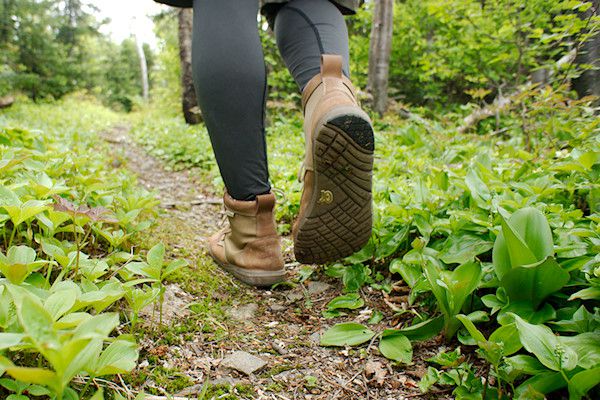
For short daily walks (~1 hr in length) around my home on gravel trails these boots feel like overkill in warm conditions. I would much rather have something with less sole (more sensitivity), and better breathability. In colder spring conditions however - when temperatures are freezing or colder - I really appreciate the extra warmth they provide.
I have decided that I am not a fan of the insoles. To me, they feel like they add too much to the shoe, making my feet feel mushy and a little cramped. Removing the insoles feels great though, the extra room and the flat, firm platform is exactly how I like it.
In addition to daily walks, I have also taken these boots on hikes of varying lengths. On one such occasion I had to make an un-planned stream crossing in water up to my knees. The rest of the hike after that was somewhat un-pleasant as the boots were very reluctant to give-up their water. Normally when doing something like that in a lightweight mesh trail shoe (my usual hiking footwear of choice) the water quickly drains and the shoes dry out while still on your feet. With the boulder boot and its leather, foam padding, and cotton lining, they stayed wet for the rest of the day.
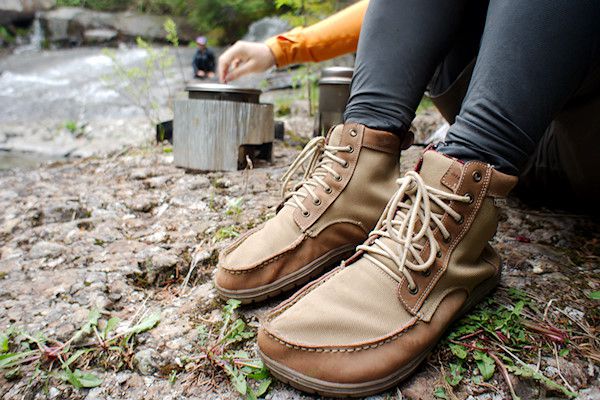
On one long day hike (21+ km) my feet got hot and sweaty. Once they were sweaty, things got damp on the inside. The combination of the dampness, soaked cotton lining, and the non-stretchiness of the leather made for some hotspots on the outside of my big toes after the first 4 hours of steady hiking. By the end of the day my big toes were sore, and I couldn't wait to get the boots off my feet. This has led me to conclude that long distance trekking is not really these boots forte.
Those last three paragraphs may sound negative, but don't take this as me saying I don't like the Boulder boots. As the reviewer, I feel it is my duty to test them in various conditions to figure out where the limits are, and I believe I have done that.
The two areas where I have found the Lems Boulder boot really shines are: cold weather and short duration hikes in rugged conditions. Where I live, I think that these boots are perfectly suited for everyday use in spring and fall (and maybe even winter) - so those are the conditions in which I think I will be using these the most.
